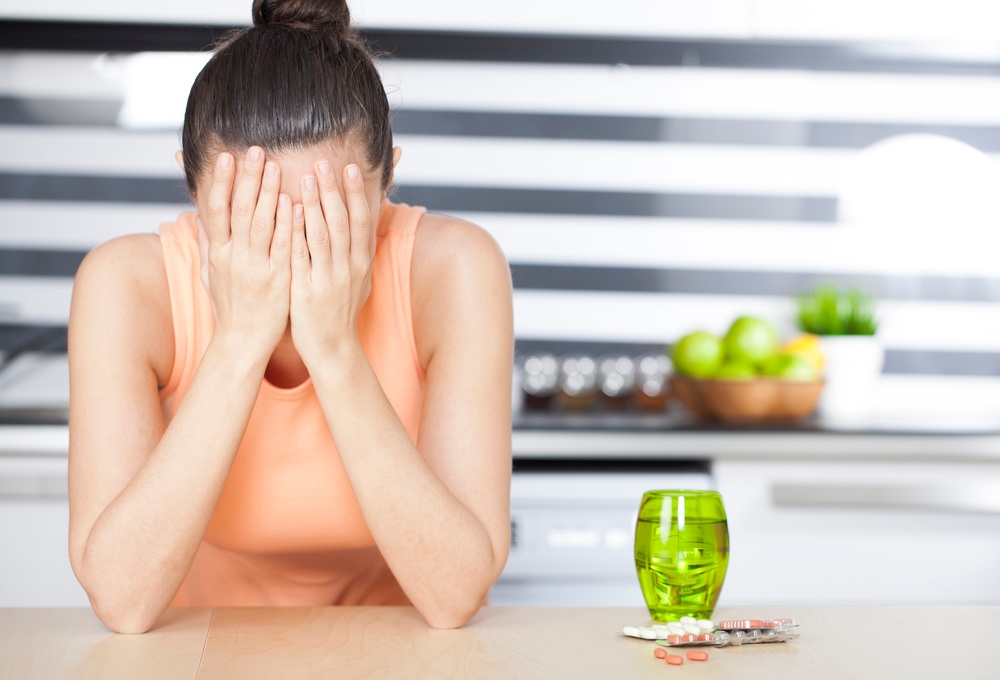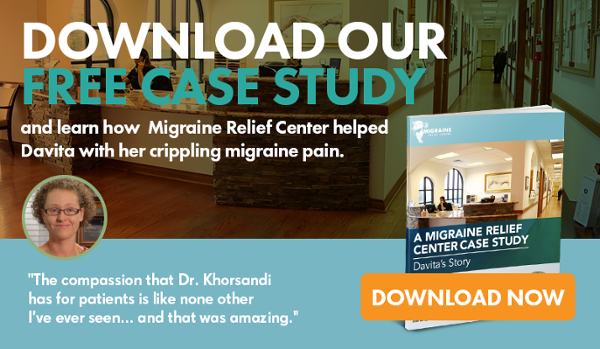
Anxiety disorders are the most common mental illness in the U.S., affecting 18.1% of American adults each year according to statistics from the Anxiety and Depression Association of America (AADA). That’s 40 million people aged 18 or older, who all experience different symptoms and levels of intensity. For most patients, this means constant worrying and defensive behavior, including avoiding stimuli like objects and places they know will trigger their condition.
Types of Anxiety
Most sufferers have one type of anxiety, although there are cases where patients experience other types too. The five major forms of anxiety are:
#1 . Generalized Anxiety Disorder (GAD)
This affects 3.1% of the population and is twice as likely to occur in women than in men. Often, sufferers experience major depression in tandem with extreme worry and tension about a number of issues. GAD is diagnosed when patients have difficulty controlling anxiety on four or more days per week over a 6-month period, and have three or more of the following symptoms:
- Nervousness or irritability, increased heart rate
- Rapid breathing or hyperventilation, sweating and/or trembling
- A sense of impending danger, panic or doom
- Difficulty paying attention and/or sleeping
- Feelings of weakness or fatigue
- Abdominal problems
#2. Obsessive-Compulsive Disorder (OCD)
OCD is a chronic disorder that produces uncontrollable, recurring thoughts, and behaviors that the patient is compelled to repeat over and over. It impacts more than 2 million American adults or 1.0% of the population, and is as common in men as in women. Most people develop OCD in their late teens, but one-third get symptoms before 14 years. These include obsession with germs and bacteria, taboo ideas about sex, religion or self-harm, and the organization of things in precise ways. The obsessions result in compulsive rituals that interfere with regular life, such as:
- Excessive cleaning and handwashing
- Repeated checking of things
- Very precise organization and arranging
In most instances, patients spend hours on these rituals and behaviors in an effort to find relief from the anxiety the obsessions cause.
#3. Panic Disorder (PD)
Panic disorder is when someone experiences repeated episodes of intense fear that cause physical symptoms. These include pain in the chest, irregular heart rhythms, breathing difficulties, dizziness and gastric distress. As with GAD, women are twice as likely to experience PD than men, and it affects 2.7% of the U.S. population. Patients develop unexpected panic attacks that interfere with their daily lives, prevent them from working and doing other activities where they might experience an attack.
#4. Post-Traumatic Stress Disorder (PTSD)
This condition develops after someone has been exposed to a terrifying event or ordeal, usually in which they were subjected to (or threatened with) physical harm. This is a common disorder in returning military veterans and people who have been raped, either as children or as adults. PTSD affects 3.5% of the U.S. population.
#5. Social Phobia (or Social Anxiety Disorder)
The third largest mental health problem in today’s society, this affects 7% of the population. The condition is characterized by fear and anxiety over being judged and evaluated negatively by others. It can apply to a specific activity such as public speaking, or all social interactions.
The Relationship Between Anxiety and Migraine
This is a “chicken and egg” situation, because often people develop anxiety after living with migraines for a while. Others experience anxiety first, which prompts the release of adrenaline, a known migraine trigger. Research shows a strong link between the two, although doctors don’t yet fully understand the relationship. What we do know is that:
Hormonal changes can trigger both migraines and anxiety disorders. While women are more sensitive to these, they also occur in men.
When patients experience either migraine or anxiety it makes them sensitive to changes in their physical and emotional states.
Anxiety Can Cause Migraines
When you suffer from anxiety, it can cause you to behave in ways that lead to a migraine. For example, if you’re anxious you might drink more caffeine or alcohol, or eat foods you should avoid because they trigger your migraine. Anxiety can also cause a rise in blood pressure, or a surge of adrenaline that can precipitate a migraine.
Anxiety can cause sleeplessness, insomnia and fatigue, which are all triggers for migraine episodes. For patients with stress as a migraine trigger, simply suffering from anxiety can lead to the onset of a migraine.
The Flip Side of the Coin
Migraine can also lead to anxiety, however. Anxiety is based in fear, and the pain of a migraine, combined with symptoms such as light and noise sensitivity or nausea, can trigger patients who fear headache attacks. It’s like going to the dentist. You aren’t afraid of the procedure, but anticipating the pain makes you fear and avoid the visit. Besides, coping with migraine symptoms is exhausting, and anticipation of this can raise the risk of anxiety.
Research indicates anxiety can be a symptom of a migraine itself, thanks to chemical changes in the brain that increase your nervousness—even before the migraine develops.
Preventing Anxiety-Related Migraines
You can take steps to prevent and minimize the effects of migraines regardless of their cause, and by managing your anxiety levels, you can reduce your risk of headaches even further. Some lifestyle changes you can try are:
Increase Your Exercise Routine
Studies show that exercise benefits migraineurs in multiple ways. It boosts your immune system, helps reduce feelings of depression, and promotes restful sleep. By lowering the number of headaches you experience, you could also reduce your anxiety to a manageable level.
Establish Healthy Eating Habits
The American Migraine Foundation recommends eating five or six small portions of fresh food throughout the day. This helps prevent migraine attacks by:
- Avoiding hunger-based headaches
- Lowered risk of eating potentially-triggering foods simultaneously
- Preventing weight gain, which can increase the frequency of attacks
Keep a record of your food intake in your migraine diary, which will provide a baseline for determining which foods contribute to your migraine. By doing so, you can avoid the anxiety that accompanies the knowledge that you’re risking a headache, as well as issues such as comfort eating.
Stay Well Hydrated
Keeping your body hydrated is important for migraine prevention and general health. Some patients find drinking a glass of water at the start of an attack can help as much as over-the-counter medication does.
Learn to Relax
Deep relaxation techniques might be able to help you deliberately unwind when anxiety sets in and ward off the tension that leads to a migraine. Follow sleep hygiene recommendations to ensure you get enough rest and avoid the anxiety that goes with insomnia.
Treating Migraines and Anxiety
It’s important to treat each of these conditions individually, as well as examining the links between them. Prescription drugs such as triptans and NSAIDs may help to provide relief from the migraines, but won’t have any effect on the anxiety apart from reducing the reason for it. Anti-depressants can reduce your response to anxiety triggers, and natural therapies such as yoga, massage, aromatherapy, and calming herbal drinks like chamomile can help to relieve the cycle.
If your doctor identifies a connection between your migraines and anxiety, it offers you the opportunity to take steps to address your condition. Since every patient has their own unique circumstances, it’s best to discuss this with your migraine practitioner before making any changes to your lifestyle and health care.



